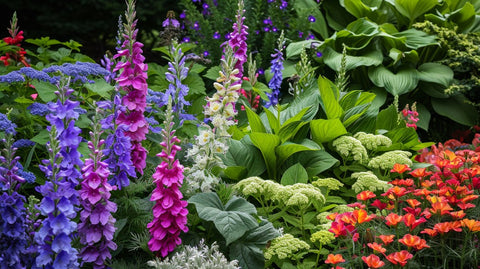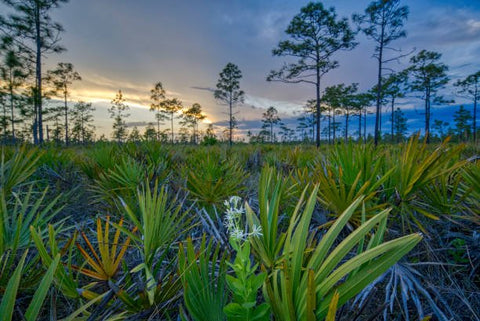Introduction
Florida is renowned for its unique and diverse ecosystem, home to a wide array of native plant species that contribute to its biodiversity. In addition to adding beauty to the landscape, native plants have a vital role in preserving ecosystems and supporting local wildlife. In this article, we will explore the benefits and importance of using Florida native plants in gardening and landscaping, as well as provide tips and resources for incorporating them into your own garden.
What are Native Plants?

Native plants refer to species that have naturally evolved in a particular region over thousands of years. They are well-adapted to the local climate, soil conditions, and wildlife, making them more resilient and sustainable than non-native plants. Native plants have certain characteristics that set them apart, such as deep root systems, which help prevent erosion and retain water more effectively.
The benefits of using native plants in gardening and landscaping are numerous. They require less water, fertilizer, and maintenance compared to non-native plants, making them more cost-effective and environmentally friendly. Native plants also attract and support local wildlife, including birds, butterflies, and other pollinators, thus contributing to the overall biodiversity of an area.
Florida's Diverse Native Plant Species
Florida boasts a wide range of ecosystems, each with its own unique native plant species. Coastal areas are home to plants like sea oats and beach sunflowers, which are adapted to the sandy and salty conditions. Wetlands and swamps harbor species such as cypress trees and sawgrass, while pine forests and prairies feature plants like longleaf pines and wiregrasses.
Understanding the native plant species in different ecosystems can help gardeners make informed choices when selecting plants for their own landscapes. By incorporating native plants, individuals can create gardens that harmonize with the natural surroundings and provide important resources for local wildlife.
Benefits of Florida Native Plants
The benefits of using Florida native plants go beyond aesthetics. Let's explore some of the key advantages:
Ecological Benefits
Native plants play a crucial role in maintaining healthy ecosystems. Their deep root systems help improve soil health by preventing erosion and promoting water absorption. Native plants also require less water compared to non-native species, contributing to water conservation efforts. The intricate network of roots and foliage provide habitat and shelter for microorganisms, thus fostering a balanced and diverse ecosystem.
Wildlife Habitat and Conservation
One of the primary reasons to incorporate native plants in gardens is to support local wildlife. Native plant species have co-evolved with native animals, providing essential food sources, shelter, and nesting sites. By creating gardens with native plants, individuals can attract a variety of birds, butterflies, and other pollinators, contributing to the overall conservation of native species.
Economic Benefits
In addition to their ecological advantages, Florida native plants offer economic benefits. Their low maintenance requirements reduce the need for watering, fertilizers, and pesticides, resulting in cost savings for homeowners. Native plants are also more adapted to the local climate, making them less susceptible to diseases or pests than non-native species, further reducing the need for chemical treatments.
Landscaping with Florida Native Plants
Incorporating Florida native plants in your garden can be a rewarding experience. Here are some tips to get started:
Selecting and Incorporating Native Plants
When selecting native plants for your garden, consider the specific requirements of each species. Some plants thrive in sunny, well-drained areas, while others prefer shade or wet soil conditions. Research the native plants that are suited to your region and landscape, and choose a variety of species that bloom at different times to provide year-round interest.
Creating a Wildlife-Friendly Native Plant Garden
To create a wildlife-friendly garden, include a mix of native plants with varied heights and structures. For instance, plant shrubs and trees that provide nesting sites and shade, as well as flowers that attract pollinators. Incorporate features like bird feeders, birdbaths, and water sources to attract a diverse array of wildlife.
Importance of Proper Plant Placement and Compatibility
Consider the growth habits of each plant species and plan the layout of your garden accordingly. Place taller plants towards the back or center of the garden, and shorter plants towards the edges. Group plants with similar water and sunlight requirements together to ensure they thrive. Regularly monitor and adjust the placement of plants as they grow to maintain a harmonious and visually appealing landscape.
Overcoming Challenges in Gardening with Native Plants
Despite their numerous benefits, gardening with native plants can come with its own set of challenges. Here are some common challenges and ways to overcome them:
Addressing Common Misconceptions
Many individuals believe that native plant gardens are messy or unkempt, but this is not necessarily the case. With proper planning and maintenance, native plant gardens can be just as visually appealing as traditional gardens. Educate yourself and others about the advantages of using native plants to dispel misconceptions and encourage wider adoption.
Dealing with Potential Pests or Diseases
While native plants are generally more resistant to pests and diseases, it's important to monitor your garden and take action if issues arise. Regularly inspect plants for signs of infestation or disease, and take appropriate measures such as pruning affected branches or using organic pest control methods if necessary.
Overcoming Initial Establishment and Maintenance Challenges
Establishing a native plant garden may require more effort during the initial stage, as plants need time to acclimate and establish their root systems. Adequate watering, mulching, and weed control are essential during this period. Once the plants are established, they will require less maintenance compared to non-native species due to their inherent resilience and adaptability.
Resources for Finding and Learning about Florida Native Plants
To explore and learn more about Florida native plants, consider the following resources:
Online Databases and Organizations
- Florida Native Plant Society
- Florida Native Plants Online Database
- Florida-Friendly Landscaping™ Program
Local Nurseries and Botanical Gardens
Visit local nurseries and botanical gardens that specialize in Florida native plant species. They can provide expert advice and recommendations based on your specific location and needs.
Recommended Books and Publications
- "Native Wildflowers and Other Ground Covers for Florida Landscapes" by Craig N. Huegel
- "The Shrubs and Woody Vines of Florida" by Gil Nelson
Conclusion
Incorporating Florida native plants into gardens and landscapes has numerous benefits, ranging from preserving biodiversity and supporting local wildlife to promoting sustainability and reducing maintenance costs. By understanding the unique characteristics of native plants and their role in the ecosystem, individuals can create beautiful and environmentally friendly landscapes. So, why not embrace native plant gardening and contribute to the conservation efforts in Florida? Start exploring the diverse palette of native plants available and create a garden that not only adds beauty to the surroundings but also supports the local environment.






























Comments (0)
There are no comments for this article. Be the first one to leave a message!